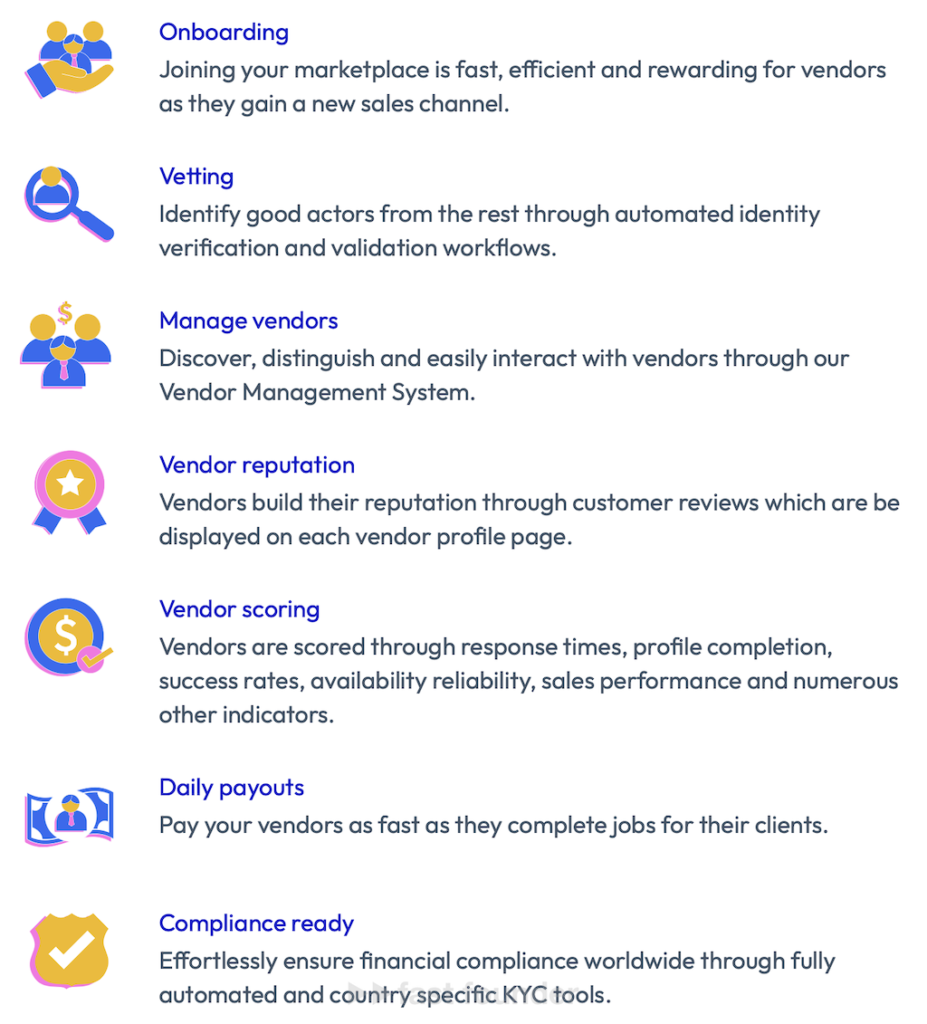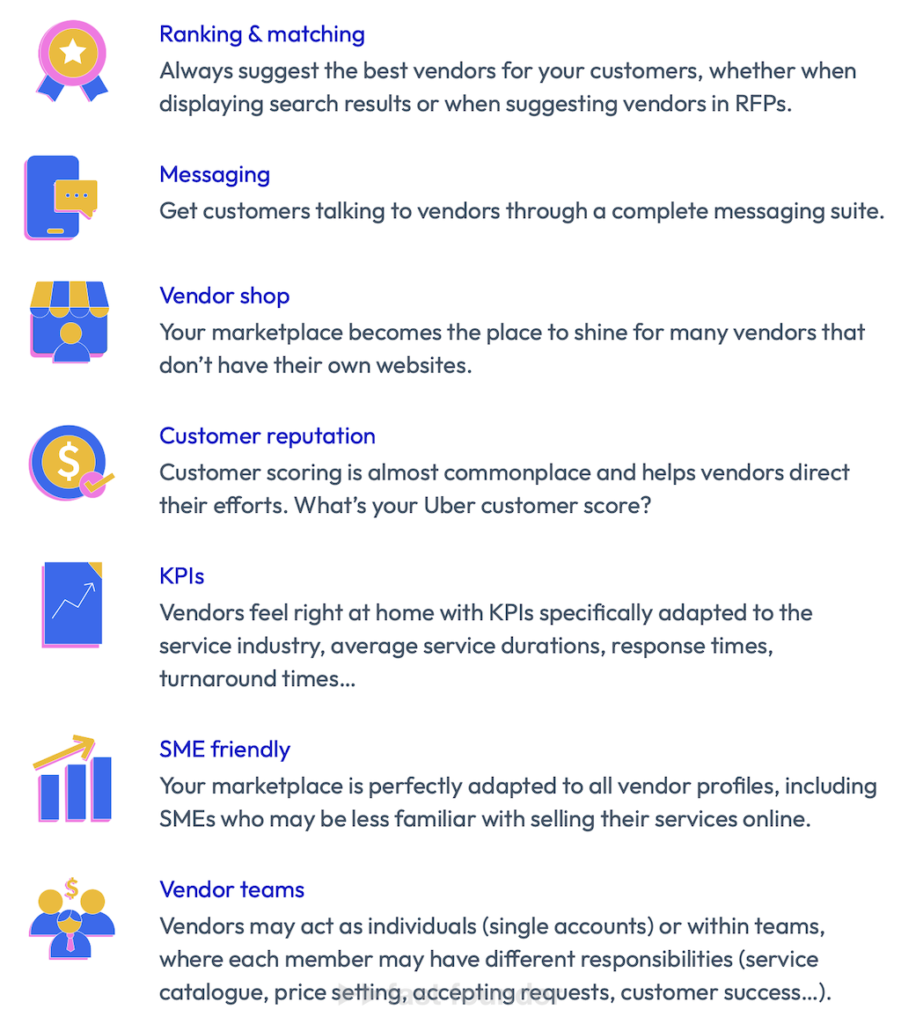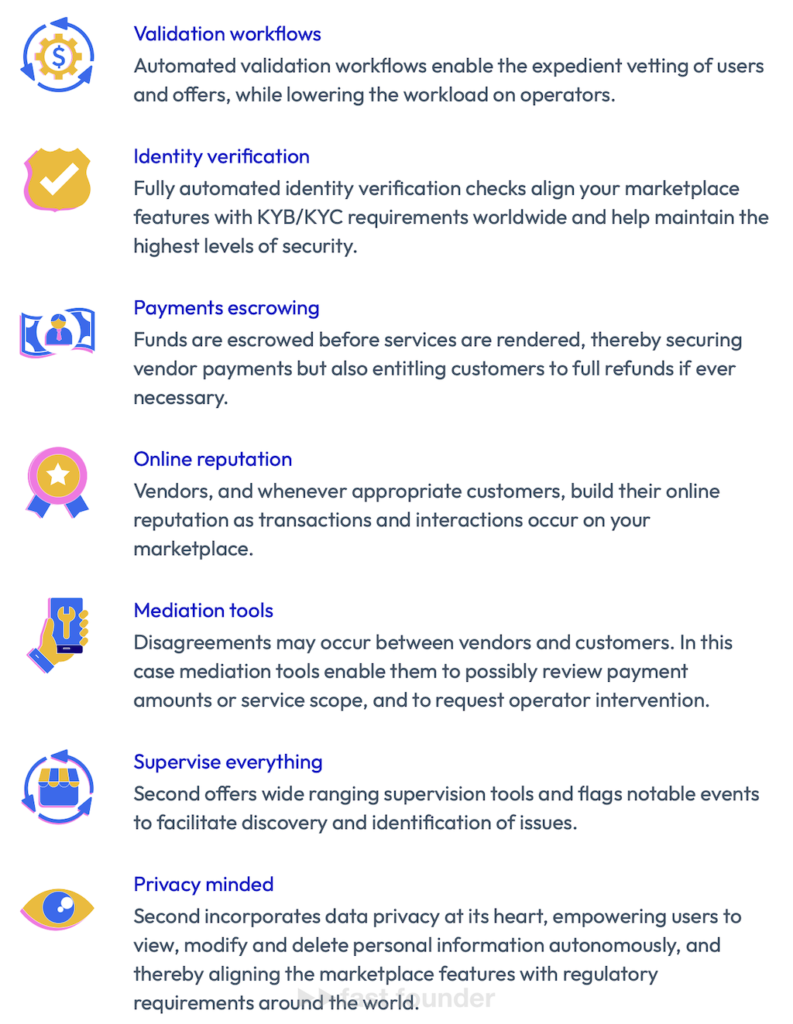Selling products online is no longer surprising to anyone. But the recent trend is the growth of online service sales. The size of this market is already 62 billion euros, but it is growing by 24% annually! It’s the perfect time to enter this space with platforms for online service sales. Here’s an interesting startup that has mastered the art of bringing service providers online using third parties. And here’s how they do it.
THE ESSENCE OF THE PROJECT

Scnd is a platform where you can create your own marketplaces. Importantly, these marketplaces are intended not for selling goods but for selling services!

Possible service offerings include car rentals, software development, hospitality, repair and construction, real estate maintenance, legal and medical services.

Marketplaces can operate under various models – B2B (business to business), B2C (business to individuals), or C2C (peer to peer).
The marketplace’s appearance can range from a platform that offers services to companies, a catalog of services on a specific topic and/or in a specific area, a tool for selling partner services on one’s own website, or a marketplace for selling any unexpected types of “as-a-service” offerings.

For your marketplace created on the Scnd platform, you can also use any monetization models – percentages from the cost of sold services, a fixed premium for a sold service, a subscription for regular service provision, wholesale purchase of services at special prices, or even a combination of several methods within one rate.
The creators of Scnd didn’t skimp on the breadth of functionality that can be embedded in your marketplace either. 😉
Platform Features

Scnd is a platform that has modules for service price inquiries, service booking (reservation) for execution at a specific time, online payment reception, and exchange of messages and files. It even allows for the organization of a “reverse marketplace” – where the client doesn’t search for a service provider but simply posts a service request, which providers respond to with their offers.

Service providers can join the marketplace automatically by filling out specific forms, and the marketplace owner has the discretion to approve or decline these applications.
Service consumers can leave reviews on the marketplace, based on which providers can be assigned reputation scores. Additionally, the platform can automatically track providers’ response times, the speed and quality of other reactions, and calculate a rating for each provider using a specified algorithm.

Not only service providers, but also consumers can be given reputations and ratings on the platform.
When the marketplace’s providers and/or consumers are companies, multiple employees with different access rights can be added to the dashboard.
The dashboard and marketplace interfaces are specifically user-friendly for small and medium business representatives who may not be very familiar with the technical details of online services.

Service provision, unlike product sales, is a much less standardized process. Therefore, the platform includes a mechanism for temporarily blocking payments received from the consumer, which will only be transferred to the provider once the consumer accepts the delivered services.
The service acceptance procedure can also be organized in a mutually convenient manner – so both the provider and the consumer have the opportunity to discuss and agree on the scope and quality of services before resorting to extreme measures like service rejection and refunds.

Scnd originates from France and was established in 2020. Since then, the startup has managed to attract clients who have already created their marketplaces on their platform. Among them are renowned international companies like Allianz, Intersport, and Siemens Energy.
Currently, the startup has raised its first investments totaling 4 million euros. This means that all this time, they’ve been able to operate using their earnings. 😉
WHAT’S INTERESTING
I want to focus on two key features of Scnd’s platform that were subtly mentioned within the description.

The first feature is the ability to transform a service into a product. This means selling it in a more standardized package, which can lead to a broader reach and increased revenue. This trend is known as XaaS – “anything as a service.”

For instance, in January, I wrote about a startup called Scaleup finance, which started offering a “CFO as a service” on a subscription model.

What’s appealing about Scnd is that, on their platform, one can launch a Minimum Viable Product (MVP) for selling any service as a product within just a few months. This saves time and resources from developing a unique platform from scratch, thereby presenting novel ways to market services in one’s industry.

The second feature is the creation of a partner marketplace network where any business can sell complementary services in addition to its primary products or services. For example, one might offer insurance from a third party for products being sold, maintenance services for real estate properties sold, or development services for additional modules to a cloud service being sold.

The customer thus receives a more comprehensive solution to their needs in one place, purchasing a full suite of designed products and services. And the primary service or product provider has an opportunity to earn additional revenue from the same customer by upselling them complementary services.

Given that service sales have rapidly and robustly migrated online, service providers need platforms that allow them to do this quickly and simply without losing the flexibility that distinguishes service sales from product sales.
Scnd aims to provide all of this. And with this approach, the startup aspires to be the Shopify of the online service sales market.

Scnd’s strategy is unique in that they don’t seem to be directly persuading service providers to use their platform. Instead, their target audience is those who want to profit from reselling third-party services. These individuals will be the ones pulling service providers online onto the marketplaces they’ve created.
Where to run
The primary trend is that service sales are moving online, transforming into products, and leaving behind the tedious “price upon request” and “we’ll let you know once it’s done.” This means not only new conveniences for consumers but also a significant growth in the online portion of the service market.
Therefore, the general direction is the creation of platforms for selling various services online.
Each service type has its intricacies. So, within this general direction, there are two potential paths:
- Create more universal platforms for selling various types of services.
- Develop platforms tailored for a specific service type but with more detailed categorization, allowing precise service selection and ordering.
Each approach has its pros and cons. The first offers a broader potential market, while the second provides depth, which can lead to faster and more secure market penetration.
Scnd’s approach is intriguing because they are targeting a broad market and trying to capture it through third parties. These third parties aim to profit from reselling services and will be responsible for bringing the necessary service providers online.
This approach is not only worth replicating but also serves as an inspiration for other potential market areas, even outside the service industry.
All in all, the online service landscape is vast and diverse, with ample opportunities for innovative ventures. Which side of this market would you venture into? A specific niche? A specific functionality? Or a more universal approach?
About the Company
Scnd Website: scnd.com
Latest funding round: €4M, 05.10.2023
Total investments: €4M, rounds: 1
